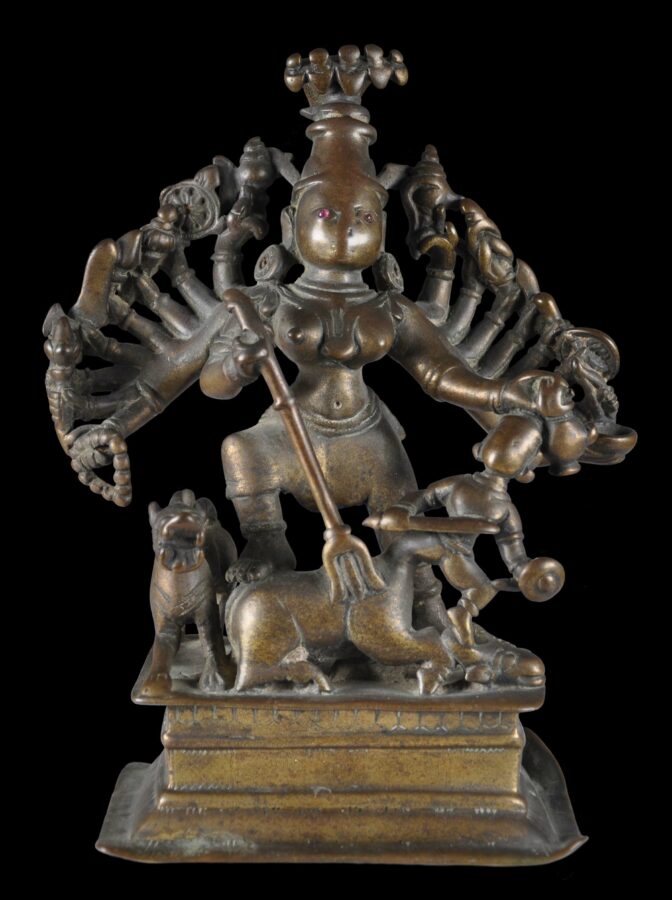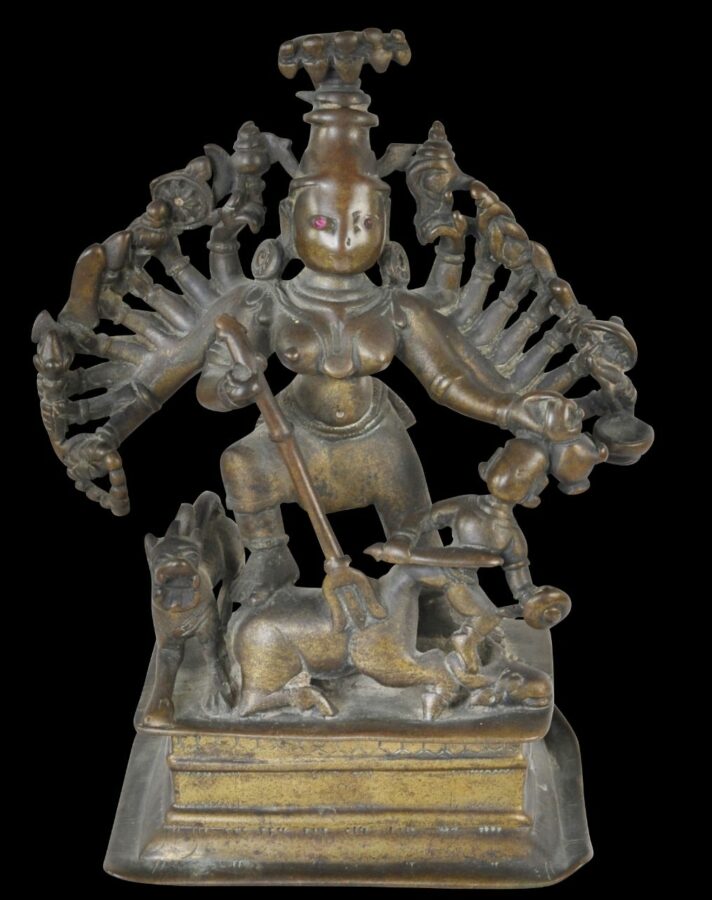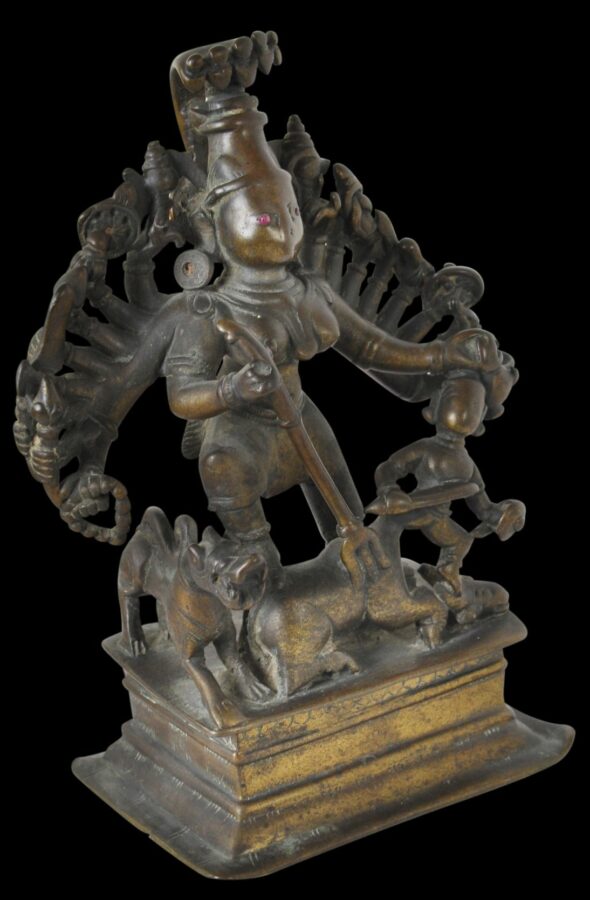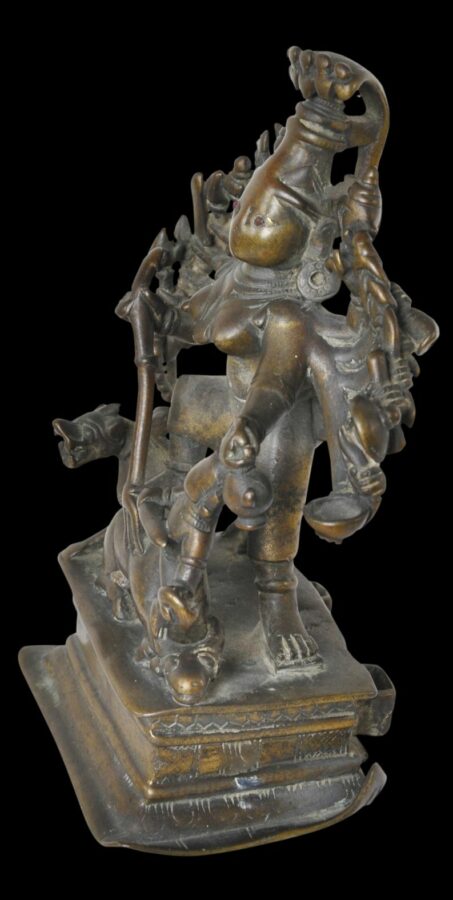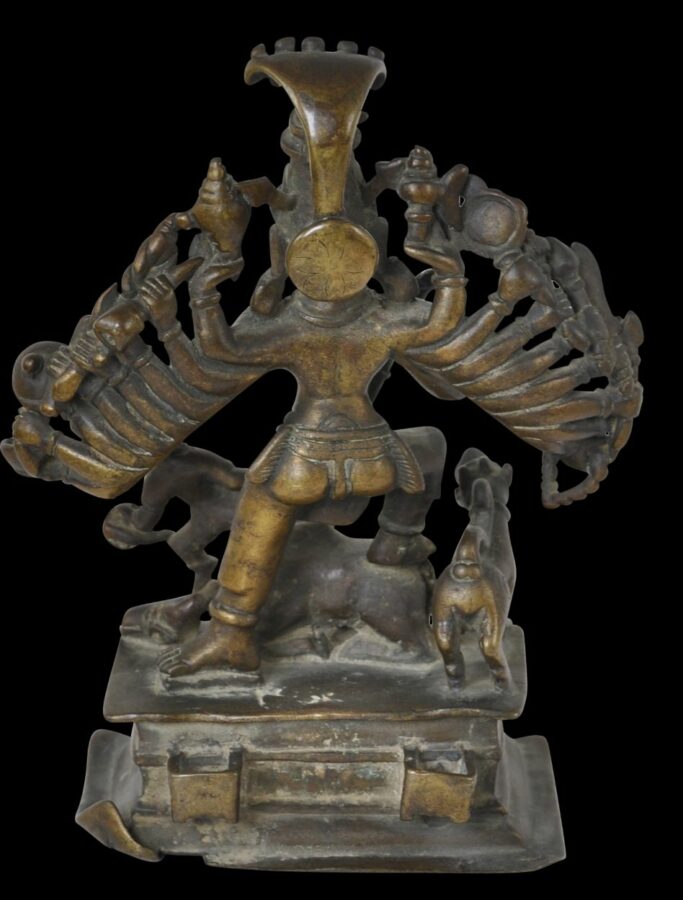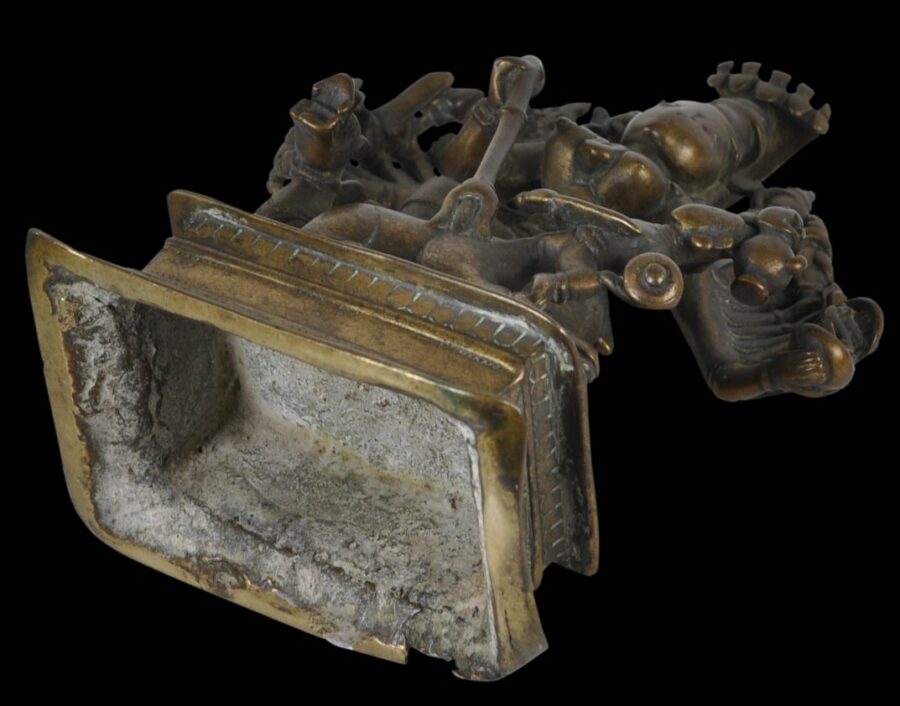This dynamic rendering of a sixteen-armed Durga shows the goddess slaying the buffalo-demon Mahishasura. Typically, Durga is shown with multiple arms but rarely is the goddess depicted with so many arms as in the case of the image here.
The moment of decapitation is captured in this bronze. Durga’s right foot is on the buffalo demon’s back. A sword is in one arm and another pulls the demon by its hair from the severed neck of the buffalo. Durga holds attributes in her other hands. These include a sword, a bow, a noose and a conch shell. A hooded cobra rears over Durga’s head.
The well-cast head of the buffalo rests to Durga’s left.
Durga’s lion mount stands on her right. Its mouth is wide open in expectation of a feast of entrails.
The group stands on a raised, rectangular platform partly incised with lotus petals.
Goddess worship harks back to the earliest era of Hinduism, and Durga, is a manifestation of Devi, the great goddess, though the popularity of goddess worship declined in many areas from around the 17th century onwards when it was supplanted by Vaishnavism with is increasingly popular male deities of Rama and especially Krishna.
The bronze has a varying patina, and much wear associated with ritual puja use. The eyes of the goddess are inset with rubies.
References
Mitchell, A.G., Hindu Gods and Goddesses, UBSPD, 1982.


